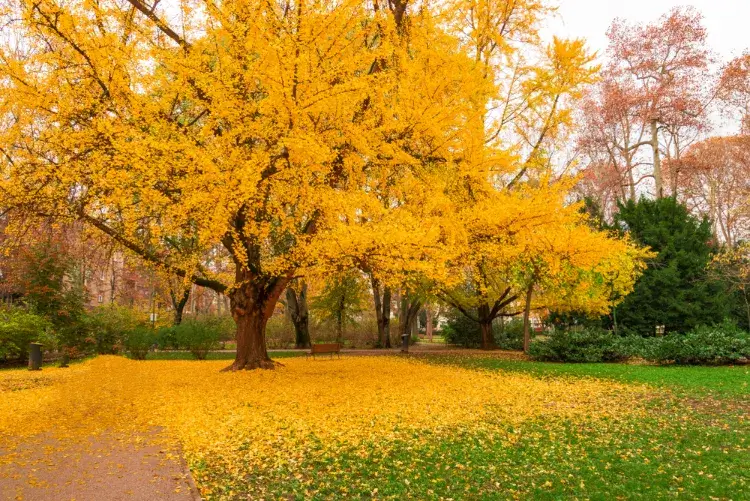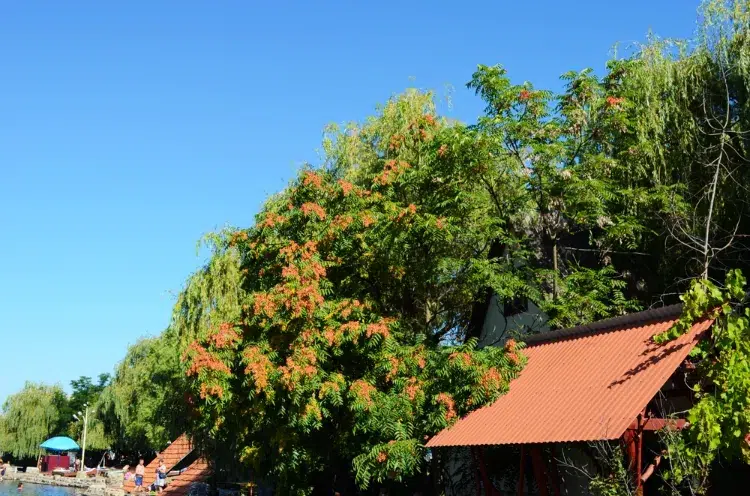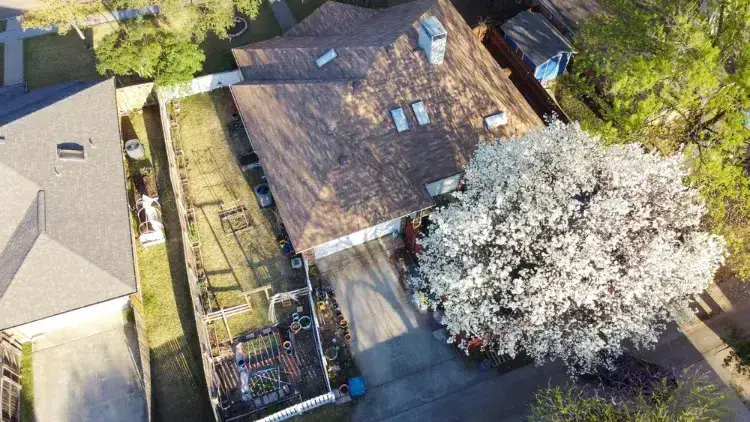
When planning your garden, aesthetics and functionality are crucial, but so is avoiding unpleasant odors that can spoil your outdoor experience. Here are three trees notorious for their offensive smells, which you might want to steer clear of if you’re looking to keep your garden area pleasant.

1. The Chinese Pear Tree (Pyrus calleryana)
The Chinese pear tree, also known as Callery pear or Bradford pear, is infamous for its unpleasant odor. While this tree is admired for its compact size and attractive flowers, its bloom comes with a significant downside. The flowers emit a smell often likened to vomit or rotten fish. This odor can be so overpowering that it can be detected from a distance. The tree’s invasive nature and the stench from its blooms make it a poor choice for planting near your home.
Key Points:
- Smell: Vomit-like or rotten fish odor.
- Size: Medium-sized, up to 12 meters tall.
- Consideration: Attractive but highly invasive and odorous.
2. The Forty-Maidens Tree (Ginkgo biloba)

Ginkgo biloba, or maidenhair tree, is known for its stunning fall foliage and medicinal benefits. However, female ginkgo trees come with a significant drawback. They produce fruit that, when decomposed, emits a foul smell akin to rancid butter or stomach acid. This odor is caused by butanoic acid present in the fruit. If you want a ginkgo tree without the smell, opt for the male varieties, which do not produce these unpleasant fruits.
Key Points:
- Smell: Rancid butter or stomach acid.
- Appearance: Beautiful golden fall leaves.
- Consideration: Only female trees produce the offending fruit.

3. The Glandular Ailanthus (Ailanthus altissima)
Often referred to as the “Tree of Heaven,” the glandular ailanthus, or Japanese varnish tree, is another tree to avoid. Despite its rapid growth and imposing height, this tree has a reputation for its offensive odor. The leaves produce a smell that has been compared to dirty socks, acrid grease, and mold. Its invasive tendencies and unpleasant smell make it unsuitable for close proximity to your home.
Key Points:
- Smell: Dirty socks, acrid grease, and mold.
- Size: Can reach up to 20 meters tall.
- Consideration: Invasive and smelly.
Tips for Avoiding Odorous Trees
- Research: Before planting, research the potential odors of different tree species.
- Opt for Male Varieties: For species with both male and female trees, choose the male varieties to avoid fruit-related smells.
- Consider Local Advice: Consult local gardening experts or nurseries for recommendations on suitable trees for your area.
By avoiding these trees, you can ensure a more pleasant and enjoyable outdoor environment, free from the unpleasant surprises of strong, offensive odors.



